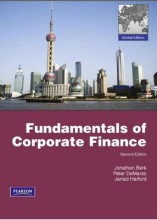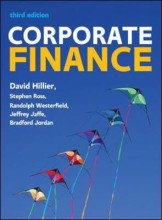Planning for and Recruiting Human Resources
32 important questions on Planning for and Recruiting Human Resources
What is human resource planning?
What are the 3 stages of human resource planning?
2. Goal setting and strategic planning
3. Program implementation and evaluation
What is the forecasting stage of HRP?
- Higher grades + faster learning
- Never study anything twice
- 100% sure, 100% understanding
What are the 3 important forecasting decisions in HRP?
2. Forecasting labour supply
3. Determining labour surplus/shortage
What is trend analysis?
What is a transitional matrix?
What are the 3 most important options for reducing a labour surplus?
2. Reducing hours (cut working hours and costs associated)
3. Early-retirement programs
What are the 4 objectives that entail downsizing?
2. Replacing labour with technology
3. Mergers and acquisitions
4. Moving to more economical locations
What are the disadvantages of downsizing?
2. Loss of talent
3. Disrupts social networks through which employees are creative
4. Employee demoralisation, risk aversity
5. Affects company image --> difficulty attracting new personnel
Why would a company pick reducing hours over downsizing?
What are the 2 most important ways to deal with a labour shortage?
2. Overtime and expanded hours
What are the benefits of temporary workers?
2. Can be turned to permanent workers if necessary
3. Lower costs due to lack of administrative tasks and financial burdens
4. Employee benefits costs are reduced
5. Training sometimes done by the temp agency
6. Temps can provide valuable insights and and an objective POV
What are the disadvantages of hiring a contractor?
2. If treated as an employee, legal obligations should bet aken into consideration
What are the disadvantages of outsourcing?
2. Security violations
3. Poor customer service
What are the 4 guidelines for successful outsourcing?
2. Do not offshore for work that requires tight security
3. Start small and monitor work closely
4. Look for outsourcing opportunities in areas that promote growth
What are affirmative-action plans?
What is a workforce utilisation review?
What are the 4 personnel policies that are especially relevant to vacancy characteristics?
2. Lead-the-market pay strategies (pay level that exceeds current market level to attract high talent)
3. Employment-at-will policies (if there is no contract stating otherwise, both parties may end employment at any time)
4. Image advertising (create favourable view of company)
What is a due-process policy?
What are the most important recruitment sources?
b. External sources:
1. Direct applicants vs. Referrals
2. Electronic recruitment
3. Advertisements in newspapers and periodicals
4. Public employment agencies
5. Private employment agencies
6. Colleges and universities
What is the difference between direct applicants and referrals?
What are the advantages of using referrals in recruitment?
2. Less pressure on recruitment system of the organisation
What are the disadvantages of using referrals in recruitment?
2. Unfair hiring, nepotism, etc.
What are the advantages and disadvantages of electronic recruitment?
Disadvantage: Large boards do not distinguish between job seekers
What is the difference between public and private employment agencies?
What is a yield ratio?
What is the cost per hire?
In what ways can recruiters have a positive effect on recruitment?
2. Should avoid offensive behaviour
3. Recruit with teams rather than individual recruiters
What 2 main aspects do people consider when applying for a job?
2. Possible fit
What is the difference between diffuse and specific cues?
What is the wide nets approach to recruiting?
What is the wide trawls approach to recruiting?
The question on the page originate from the summary of the following study material:
- A unique study and practice tool
- Never study anything twice again
- Get the grades you hope for
- 100% sure, 100% understanding





























